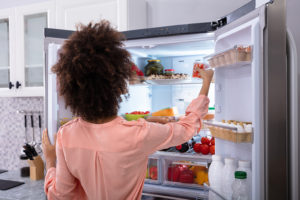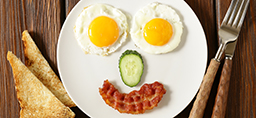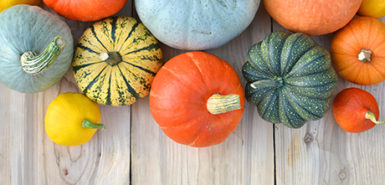
It’s time for spring cleaning—and that includes your refrigerator.
As you begin to assess the far reaches of your fridge, shoving aside those eternal pickles and crusty mustard bottles, remember to set aside glass containers and any items marked with the recycling symbol. Those are all readily accepted by your local recycling agency.
It’s not always easy to decide what to pitch and what to keep, because the expiration labels can get a little tricky sometimes.
The U.S. Department of Agriculture’s food product dating resource provides important details on federal regulations for different types of foods, and the Michigan Food Safety website is also a great resource.
What do the different food product dates mean? Let’s take a look.
- Best If Used By/Before: This indicates when a product will be of best flavor or quality. It is not a purchase or safety date.
- Sell By: This tells the store how long to display the product for sale, for the purposes of inventory management. It is not a safety date.
- Use By: This is the last date recommended for use of the product at its peak quality. It is not a safety date, except for when it applies to infant formula. The “Use By” date is selected by the manufacturer, packer or distributor of the product on the basis of product analysis throughout its shelf life, tests, or other information. It is also based on the conditions of handling, storage, preparation and use.
Infant formula
Federal regulations require a “Use By” date on the product label of infant formula, under FDA inspection. Consumption by this date ensures the formula contains the quantity of each nutrient as described on the label.
Formula must maintain an acceptable quality to pass through an ordinary bottle nipple. Never buy or use baby formula after its “Use By” date.
Fridge duty
To start cleaning the fridge, begin with a visual and smell check in all areas, including drawers.
Immediately discard any food or containers of food that are discolored, smell bad, dried out or moldy. In this case, it is probably best to place the food and the packaging directly into the trash.
As you clean, keep in mind that drawers with designated air and moisture control for fruits, vegetables and meats help keep foods fresh, but they are not impermeable to eventual mold.
Milk products and fresh meats and fish are usually the first to reach the point of no return. If you’re not using meats and fish within one or two days, be sure to freeze them immediately after you purchase them. If the item is not frozen, discard it if the stamped date has passed.
The fruit and vegetable drawers should be examined carefully. Leftover bags of salads could be lingering next to other forgotten, partially used produce that has passed its prime.
Organic products and products free of preservatives will spoil faster, as they typically lack any additives to inhibit the growth of mold, yeast or bacteria.
King size
Many people buy larger, economy-size items from wholesale clubs or big box retailers that don’t always offer alternative smaller sizes. Maybe you planned to use those bulk purchases for multiple uses, or for recipes that never played out.
Either way, if you’ve forgotten about those large items or you decided not to use them—or more than likely, you’ve opened it and used it just once—those items often get pushed toward the back of the refrigerator.
When the time comes to clean, you’ll find those big bags of items—carrots, celery and such—are no longer edible.
It’s often quite clear what you need to discard. But watch closely for items that have long exceeded their due date. They should be tossed. Some common items in this category include:
- Mustard
- Ketchup
- Mayonnaise
- Sour cream
- Cream cheese
- Cottage cheese
- Yogurt
- Pickles
- Salad dressings
- Cheese
- Butter
- Breads
- Jams and jellies
- Chicken broth
- Soups
Once you’ve cleared the actual items out, you should remove all the drawers and wash them in the sink. Let them dry completely before returning them to the refrigerator.
While the drawers are removed and drying, use warm, soapy water (dishwashing soap is best) and a sponge to clean the inside of the fridge, including fixed shelves, side panels and such. Splashes, drips and other messes can even hit the undersides of shelves, so be sure to look there, too.
Once you’ve cleaned it and aired it out, you should be all set. It’s finally time to organize your newly cleaned fridge.
 /a>
/a>
 /a>
/a>
 /a>
/a>